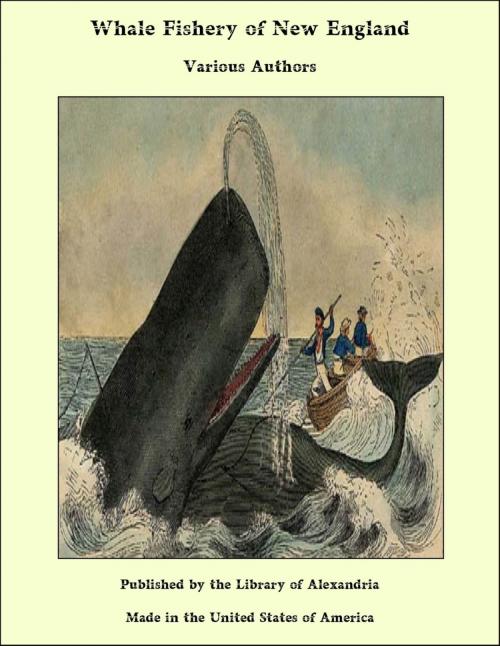Whale Fishery of New England
Nonfiction, Religion & Spirituality, New Age, History, Fiction & Literature| Author: | Various Authors | ISBN: | 9781465616968 |
| Publisher: | Library of Alexandria | Publication: | March 8, 2015 |
| Imprint: | Language: | English |
| Author: | Various Authors |
| ISBN: | 9781465616968 |
| Publisher: | Library of Alexandria |
| Publication: | March 8, 2015 |
| Imprint: | |
| Language: | English |
No animal in prehistoric or historic times has ever exceeded the whale, in either size or strength, which explains perhaps its survival from ancient times. Few people have any idea of the relative size of the whale compared with other animals. A large specimen weighs about ninety tons, or thirty times as much as an elephant, which beside a whale appears about as large as a dog compared to an elephant. It is equivalent in bulk to one hundred oxen, and outweighs a village of one thousand people. If cut into steaks and eaten, as in Japan, it would supply a meal to an army of one hundred and twenty thousand men. Whales have often exceeded one hundred feet in length, and George Brown Goode, in his report on the United States Fisheries, mentions a finback having been killed that was one hundred and twenty feet long. A whale’s head is sometimes thirty-five feet in circumference, weighs thirty tons, and has jaws twenty feet long, which open thirty feet wide to a mouth that is as large as a room twenty feet long, fifteen feet high, nine feet wide at the bottom, and two feet wide at the top. A score of Jonahs standing upright would not have been unduly crowded in such a chamber. The heart of a whale is the size of a hogshead. The main blood artery is a foot in diameter, and ten to fifteen gallons of blood pour out at every pulsation. The tongue of a right whale is equal in weight to ten oxen, while the eye of all whales is hardly as large as a cow’s, and is placed so far back that it has in direction but a limited range of vision. The ear is so small that it is difficult to insert a knitting needle, and the brain is only about ten inches square. The head, or “case,” contains about five hundred barrels, of ten gallons each, of the richest kind of oil, called spermaceti.
No animal in prehistoric or historic times has ever exceeded the whale, in either size or strength, which explains perhaps its survival from ancient times. Few people have any idea of the relative size of the whale compared with other animals. A large specimen weighs about ninety tons, or thirty times as much as an elephant, which beside a whale appears about as large as a dog compared to an elephant. It is equivalent in bulk to one hundred oxen, and outweighs a village of one thousand people. If cut into steaks and eaten, as in Japan, it would supply a meal to an army of one hundred and twenty thousand men. Whales have often exceeded one hundred feet in length, and George Brown Goode, in his report on the United States Fisheries, mentions a finback having been killed that was one hundred and twenty feet long. A whale’s head is sometimes thirty-five feet in circumference, weighs thirty tons, and has jaws twenty feet long, which open thirty feet wide to a mouth that is as large as a room twenty feet long, fifteen feet high, nine feet wide at the bottom, and two feet wide at the top. A score of Jonahs standing upright would not have been unduly crowded in such a chamber. The heart of a whale is the size of a hogshead. The main blood artery is a foot in diameter, and ten to fifteen gallons of blood pour out at every pulsation. The tongue of a right whale is equal in weight to ten oxen, while the eye of all whales is hardly as large as a cow’s, and is placed so far back that it has in direction but a limited range of vision. The ear is so small that it is difficult to insert a knitting needle, and the brain is only about ten inches square. The head, or “case,” contains about five hundred barrels, of ten gallons each, of the richest kind of oil, called spermaceti.















